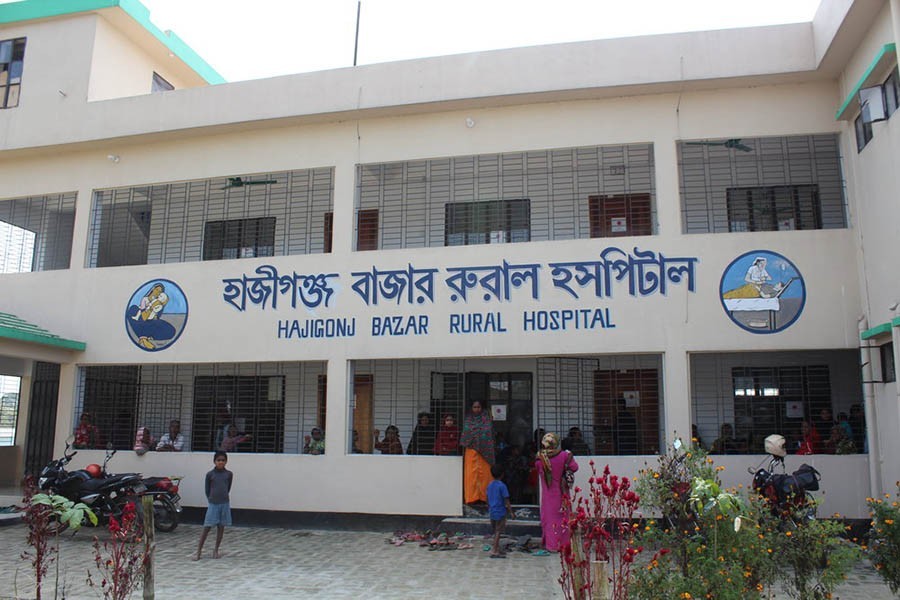Public hospitals, the main provider of healthcare services in the country, are often said to be not in a good shape- euphemistically for sure. However, the reality of the situation proves such euphemism too frail to stir very little hope on the system which is the recipient of top budget allocation every year. The dismal state of the state-run hospitals has been brought to light by a very recent survey report of the Bangladesh Health Facility Survey (BFHS).
Conducted by the National Institute of Population Research and Training, the survey covered 1,524 health facilities and 5,400 service providers -- both government and non-government - in eight administrative divisions. A total of 40 teams led by doctors collected data from the health facilities. It assessed public and private facilities with at least 20 beds, and non-governmental healthcare facilities in the formal sector. The government of Bangladesh and United States Agency for International Development funded the survey while ICF, USA provided technical assistance.
The survey report, though not yet finalised, has come out with an appalling picture of the public hospitals. The report has found that only 28 per cent of the very basic healthcare facilities are currently available in these hospitals. The most startling part of the survey finding is that 70 per cent public hospitals do not have thermometres, stethoscopes, blood pressure apparatus, gauge, weighing scales etc.
The survey mainly focused on health facilities for quality health services in the areas of child health, maternal and newborn care, family planning, selected non-communicable diseases, and tuberculosis. Lack of properly trained staff was found as a common drawback in all facilities. The survey refers to in-service training in individual skill areas. For the five services the survey considered, except for family planning, approximately around 50 per cent facilities lack appropriately trained staff.
It is a fact that public health services provided by numerous hospitals and health facilities from divisional headquarters to the Upazila level across the country are the most extensive state-run network funded from the government coffer. There are indeed many structural problems that are largely responsible for rendering the country's public healthcare system far less useful than it could become. According to the World Health Organisation (WHO) data based on the Bangladesh ministry of health statistics, there are an estimated 3.05 physicians and 1.07 nurses per 10,000 population in the country. There is a severe gap between sanctioned and filled up health worker positions: 36 per cent vacancy in sanctioned health worker positions and only 32 per cent of the health facilities have 75 per cent or more of the sanctioned staff working in the facilities. Major challenges, according to the WHO, include an overly centralised health system, weak governance structure and regulatory framework, weak management and institutional capacity in the Ministry of Health and Family Welfare (MoHFW), fragmented public service delivery, inefficient allocation of public resources, lack of regulation of the private sector - which employs more than 60 per cent of all physicians, high absenteeism of health workers including physicians, and poor maintenance of health facilities and medical equipment.
The challenges broadly identified by the WHO reflect a general picture applicable to most public health facilities in the developing countries. But there are more to it. Since healthcare in government facilities has to be mass welfare-driven being integrally linked to medicare servicing for millions-a great majority of whom are poor people-the wrongs in the system need to be clearly spelt out.
Recognition of the structural inadequacies is indeed a must for the authorities to be able to plan things better with whatever resources they have at their disposal. But how do the authorities, namely the health ministry and the heath directorate, account for the gross indulgences, irregularities and sickening neglect that have made the country-wide heath facilities almost ruinous? The upazila heath complexes have positions for more than half a dozen physicians and dozens of helping staff. Absenteeism is so common in most of the health complexes that it seems no threats of punitive action are enough to ensure presence of the physicians in their places of posting. As for the maintenance and replenishment of medicines and equipment, it is clearly the absence of minimal professional conduct that says it all. While lack of supervision is at the root of the failings, corruption is also believed to play a major part.
Given the extensive network of the government heathcare services, it is sometimes said that instead of centralised administrative system, devising plans for administrative control at district and division level and introduction of a comprehensive reporting system may bring some positive change in the work culture of the health facilities. After all, it is accountability that has to be made integral to the system.


